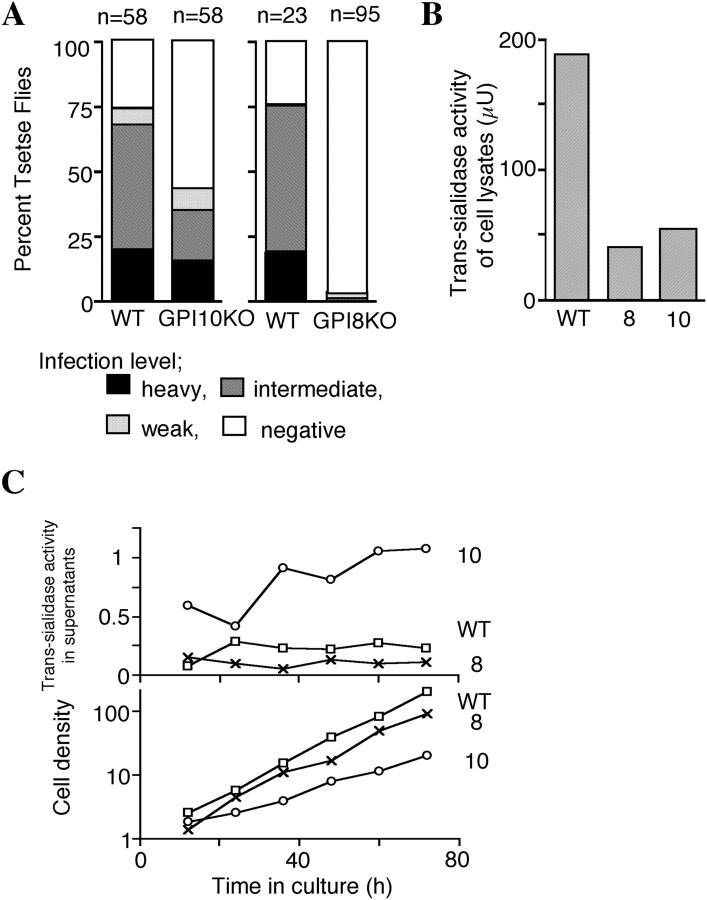Figure 1.
Both infectious ability to Tsetse flies and trans-sialidase activity are greatly decreased in GPI8KO procyclics. (A) Different infectivities to Tsetse flies of GPI10KO and GPI8KO T. brucei. Wild-type, GPI10KO, and GPI8KO procyclics (WT, 10, and 8, respectively) were fed to Tsetse flies. After 24 d, flies were dissected, and the infectivities were scored as heavy (black area, 100–300 trypanosomes per field in 10 fields with the 20× objective), intermediate (shaded area, between “heavy” and “weak”), weak (dotted area, <3 three trypanosomes per field), and negative (white area, no trypanosome detectable). The number of flies in each group is indicated above each bar. (B) Trans-sialidase activity of cell lysates from 108 of wild-type, GPI8KO, and GPI10KO parasites (WT, 8, and 10, respectively) were determined. Trans-sialidase activity is expressed in microunits. (C) Release of trans-sialidase from GPI10KO procyclics into culture supernatant. Wild-type (□), GPI8KO (×), and GPI10KO (○) procyclics were inoculated at 105 cells/ml and cultured for 3 d. Every 12 h, trans-sialidase in the culture supernatant (top) and cell density (bottom, ×105/ml) were determined. Trans-sialidase activity in the supernatant was normalized by cell density and is expressed in μU/105 cells.

